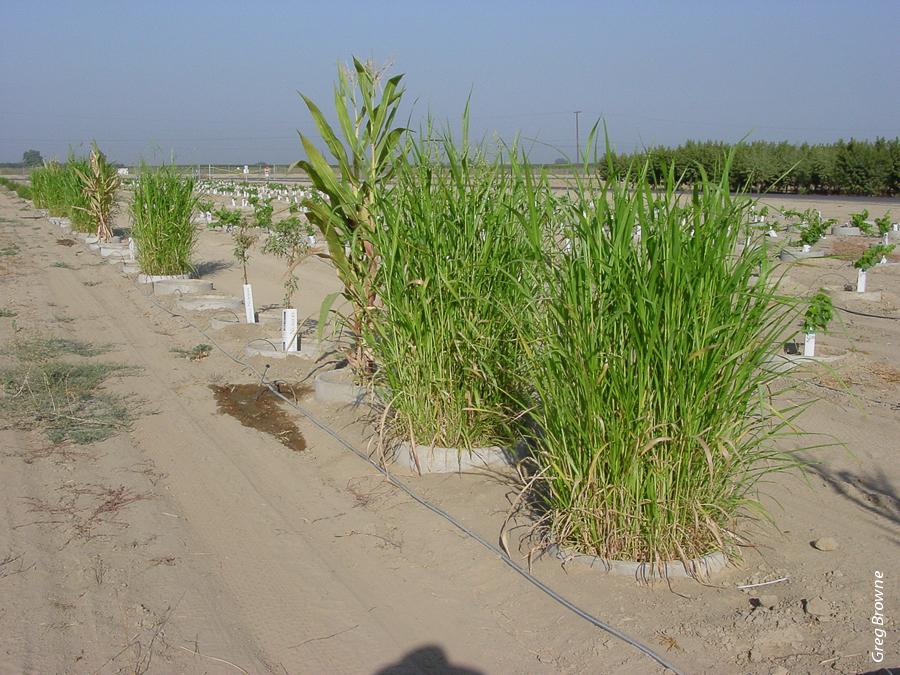All Issues
COMING UP in California Agriculture: Alternatives to methyl bromide: Managing replant disease with less soil fumigant
Publication Information
California Agriculture 67(2):116-116.
Published online April 01, 2013
PDF | Citation | Permissions
Full text
Scientists conducted trials in microplots, above, and commercial orchards to test preplant strategies for use against Prunus replant disease.
Up to one-third of California's almond and stone fruit acreage is infested with potentially debilitating plant parasitic nematodes, and even more of the land is affected by Prunus replant disease, a poorly understood soil-borne disease complex that suppresses early growth and cumulative yield in replanted almond and peach orchards. Preplant soil fumigation is used widely to control these replant problems, but the fumigant of choice, methyl bromide, has been phased out — and other soil fumigants are increasingly regulated and expensive.
The authors tested and demonstrated alternatives to methyl bromide fumigation for control of Prunus replant disease. They conducted multiple-year replant trials to evaluate costs and benefits of alternative fumigant formulations and application methods. They also examined nonfumigant approaches, including preplant cover crops, use of resistant rootstocks and fallowing. Their results identified valuable components of integrated management methods: Optimized spot and strip soil fumigation, sudangrass rotation and prudent rootstock selection.





